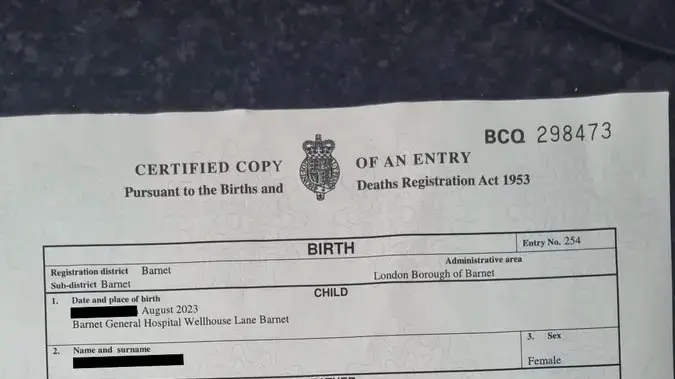Pain or dissatisfaction: It takes practice to correctly interpret a baby's crying
Created: 08/14/2022, 09:00
By: Judith Brown
When a baby cries, it can either just be unhappy or it can be in pain.
Parents can learn to interpret it correctly.
Because they can't speak yet, babies' only way of expressing themselves is by crying.
Most of the time, the very little ones are in pain or simply dissatisfied.
The baby may be suffering from gas or his diaper is full.
According to one educator, you should then ask your baby for permission before changing the diaper.
For young parents, however, it is initially difficult to interpret the screaming sounds of their offspring correctly.
Because, as a French study has now found out, the ability to hear the difference and to react accordingly to the respective cause is not innate in anyone.
This takes practice and experience.
Pain or dissatisfaction: It takes practice to correctly interpret a baby's crying
Is your baby in pain?
Or is it just screaming because of slight discomfort?
Correctly interpreting screams can be difficult for parents at first.
(Iconic image) © Westend61/IMAGO
So it has very little to do with intuition whether parents can hear the needs of their babies at the beginning.
Instead, this skill must be learned.
This is what the scientists led by Prof. Nicolas Mathe from the University of Saint-Étienne in France, who researches acoustic communication in animals and humans, found out in their study published in the journal "Current Biology".
Their research involved people with different levels of experience in caring for babies: parents of children of different ages, those with occasional experience, such as babysitting, non-parents with extensive professional childcare experience, and those with no experience at all.
First, the subjects had to complete a short training session.
They each got eight different recordings lasting a few seconds of a single baby crying.
These were either cries of pain during a vaccination at a pediatrician's office or cries of mild discomfort while bathing at home.
The participants then had to match new crying sequences from the baby they were familiar with and from an unfamiliar baby.
The ability to distinguish screams of pain or dissatisfaction was tested.
This produced amazing results.
You can find even more exciting health topics in our free newsletter, which you can subscribe to right here.
Parents must learn to correctly interpret their baby's crying
Both women and men with no baby-handling experience were unable to correctly interpret the crying sequences more often than might be expected.
Parents with children who are at least five years old and people with extensive professional experience, on the other hand, were better able to identify the screaming.
However, parents of infants under the age of two were by far the best at this, even when the baby was a stranger to them.
According to the authors of the study, it has already been suggested that experienced listeners develop resistance and reduced sensitivity to acoustic pain signals over time.
This could explain why parents of older children and professionals scored lower on the test.
From an evolutionary point of view, it also makes sense that the correct assignment can be learned.
After all, children are often cared for not only by their parents, but also by another network, consisting of grandparents and educators, for example.
Especially in summer it can happen that the little ones scream and whine because they are too hot.
You can easily check whether the screaming is caused by the earlobe.
This article only contains general information on the respective health topic and is therefore not intended for self-diagnosis, treatment or medication. In no way does it replace a visit to the doctor. Unfortunately, our editors are not allowed to answer individual questions about clinical pictures.











